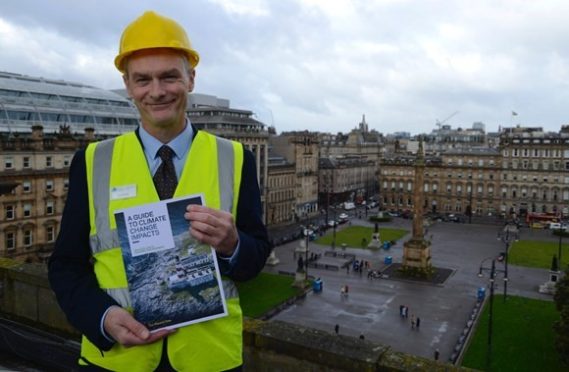
A new guide to help Scotland’s historic sites adapt to the impacts of climate change has been published today.
The Guide to Climate Change Impacts was launched at Glasgow’s City Chambers by sector partners through Historic Environment Scotland (HES), as lead of the Our Place in Time (OPiT) Climate Change Working Group.
The guide aims to raise awareness of the risks and hazards of climate change – such as increased rainfall, soaring temperatures, rising sea levels and shifting coasts – and their physical impact on the historic environment throughout Scotland.
Identifying seven elements of the historic environment including roofed buildings and infrastructure, gardens and designed landscapes, marine, coastal, surface remains, buried remains and collections and internal fabrics, the guide explores the different hazards that threaten these sites.
The guide is the first of its kind and has been produced collaboratively with partners from across the historic environment sector and beyond, including heritage trusts, tourist bodies, universities and religious organisations, as well as climate change specialists.
Hazel Johnson, OPiT Project Manager for Built Heritage and Climate Change at HES, said: “The rate of change to Scotland’s climate is already having profound impacts across all aspects of society, and poses real concerns for the future.
“Scotland’s historic environment is particularly vulnerable to the impacts of climate change, from sites in exposed coastal locations at risk from erosion, to stonework suffering accelerated decay caused by increasing rainfall.
“But our historic places also offer a unique perspective on how humans have adapted to changes in their environment over hundreds and even thousands of years, and they have an important role to play in creating sustainable and resilient communities across the country.
“The publication of the Guide to Climate Change Impacts is an important milestone for the historic environment sector in Scotland, and we look forward to seeing its use and development in the future.”
To view and download the Guide to Climate Change Impacts on Scotland’s Historic Environment, visit the HES website.

Enjoy the convenience of having The Sunday Post delivered as a digital ePaper straight to your smartphone, tablet or computer.
Subscribe for only £5.49 a month and enjoy all the benefits of the printed paper as a digital replica.
Subscribe